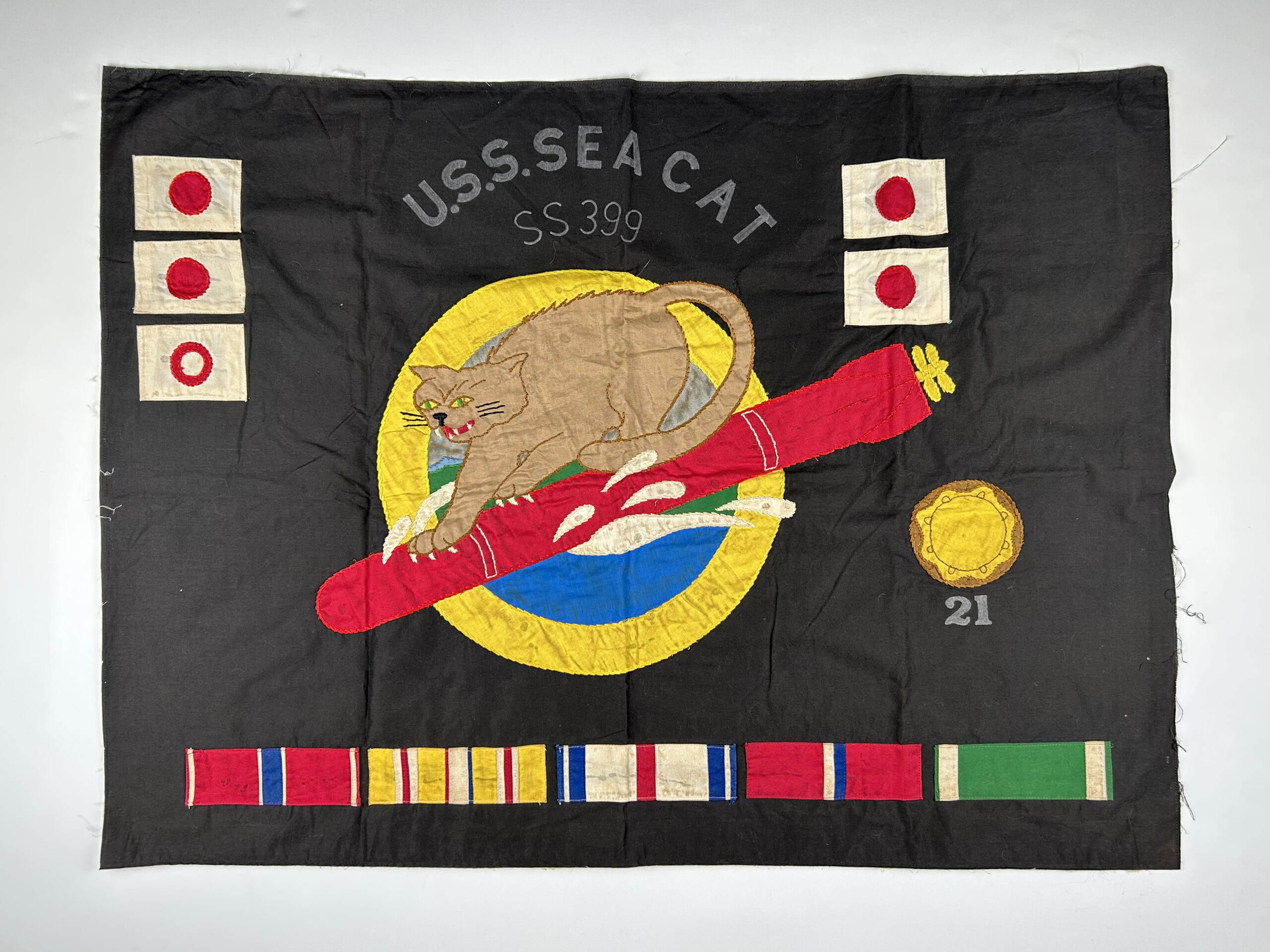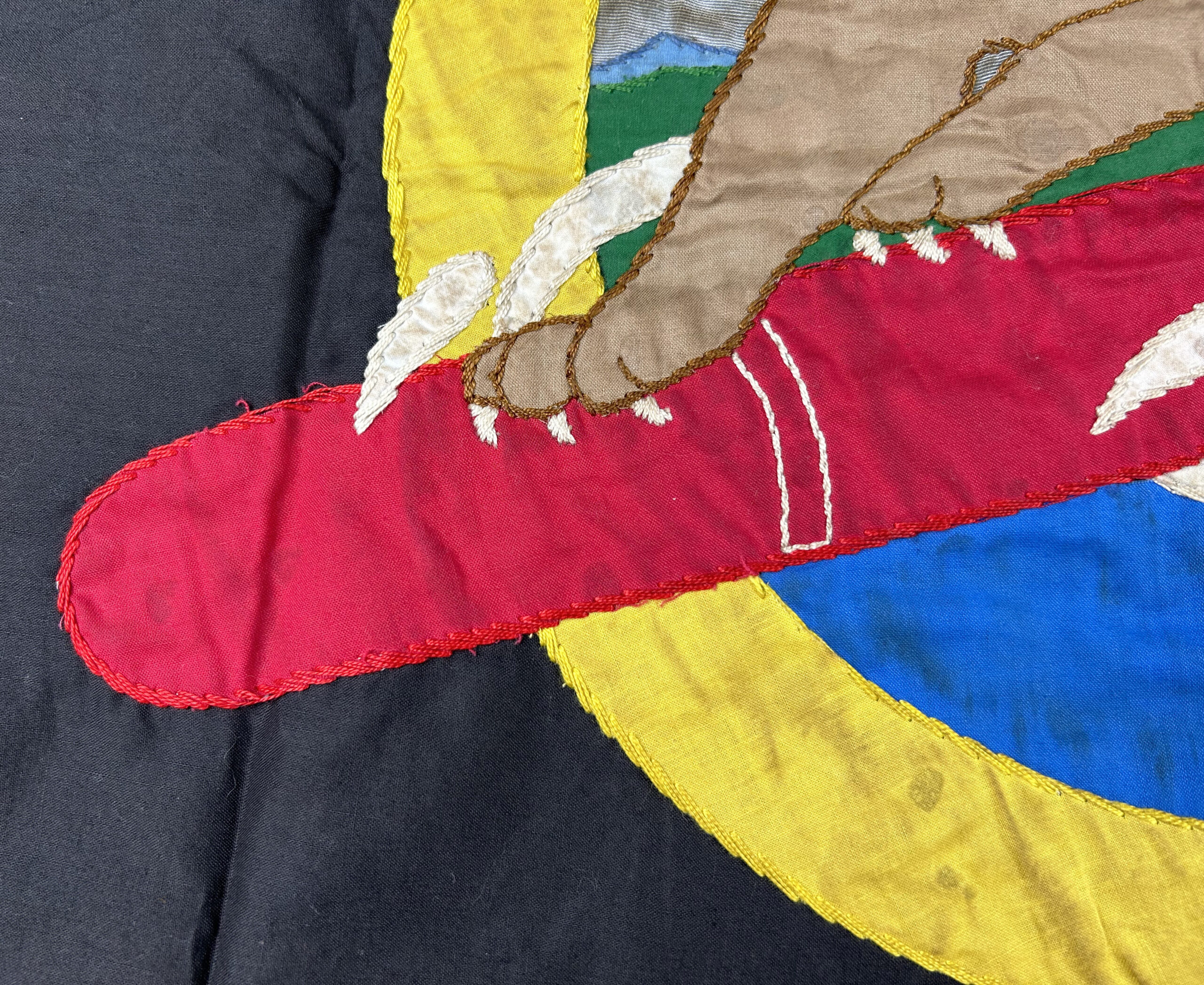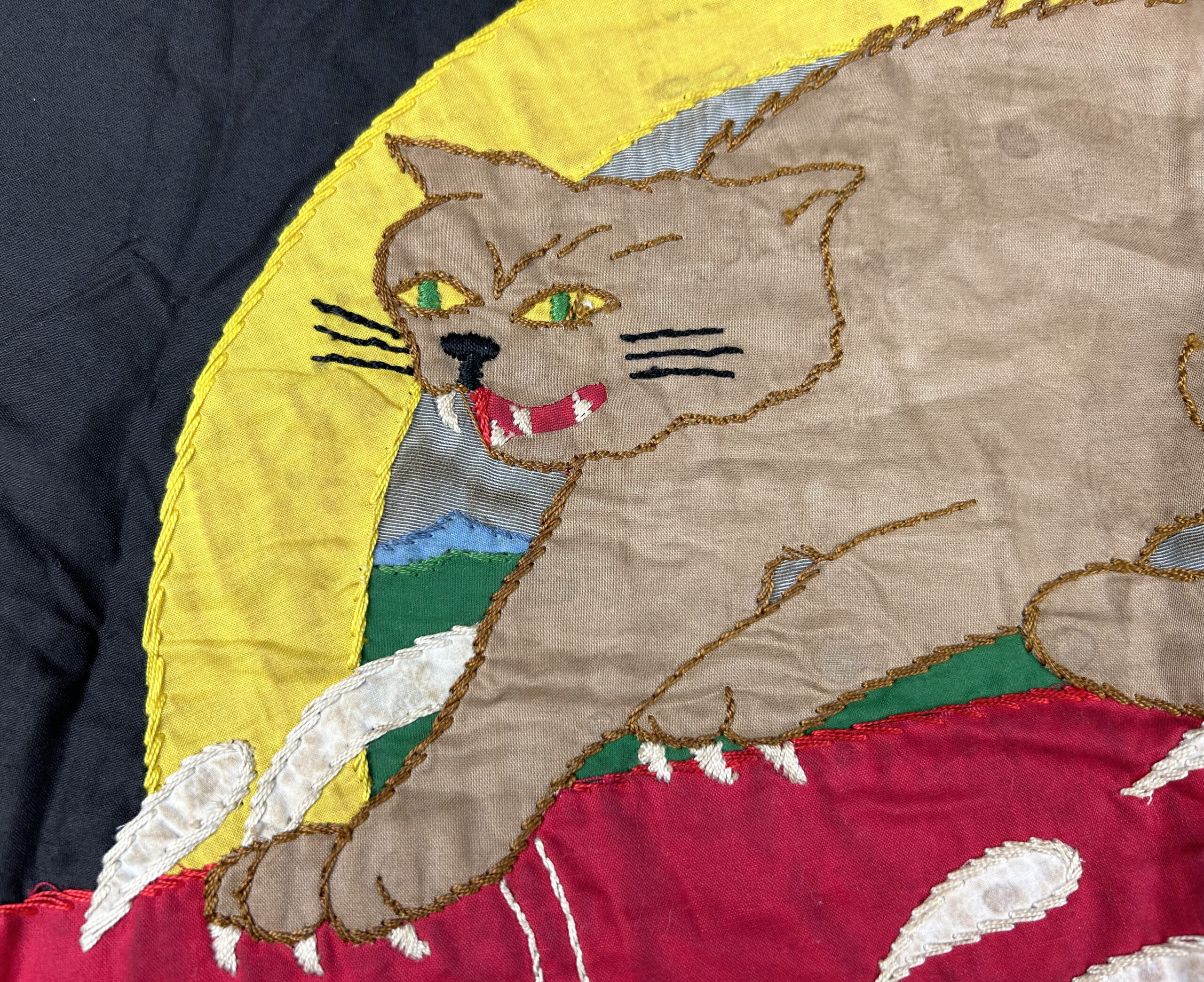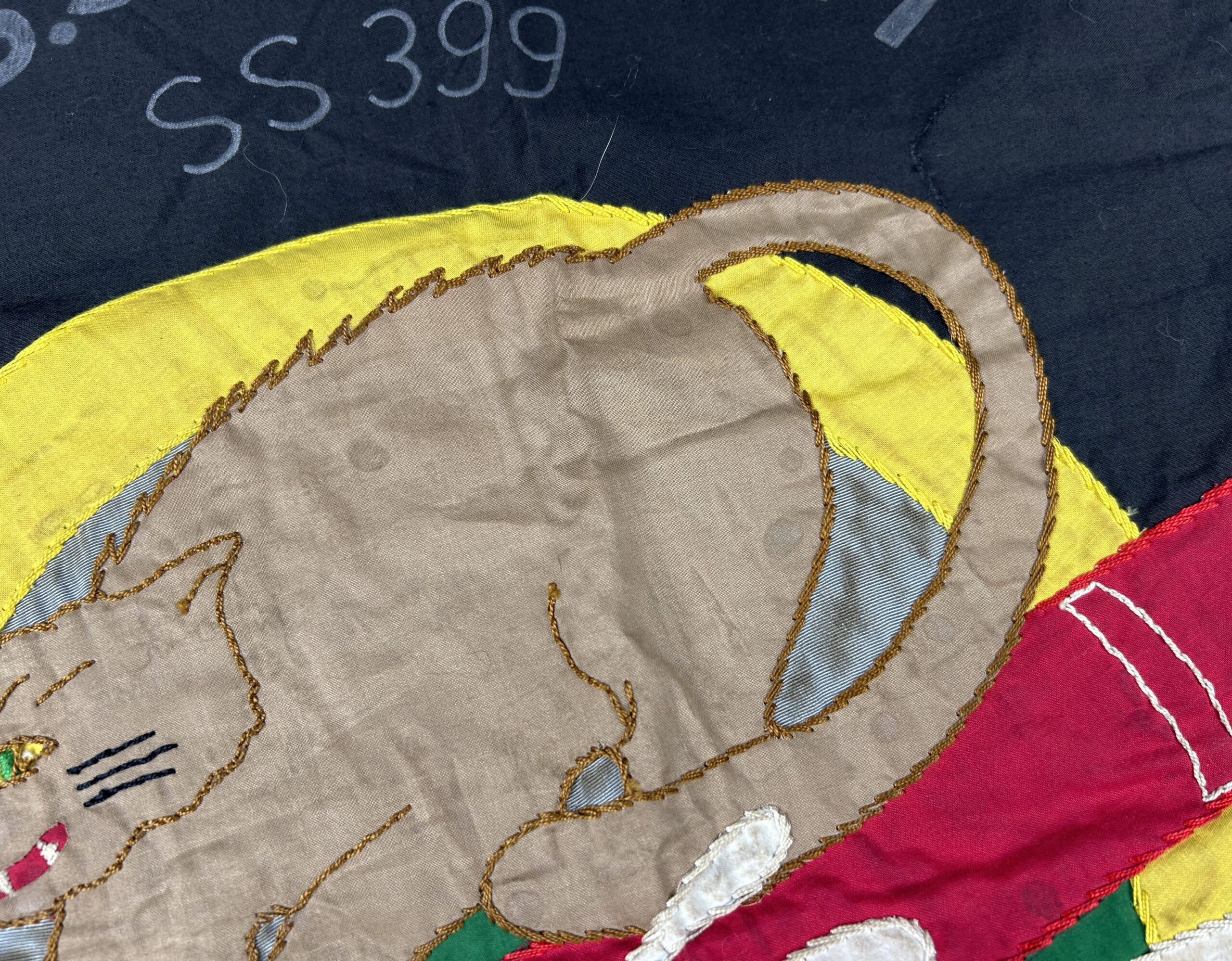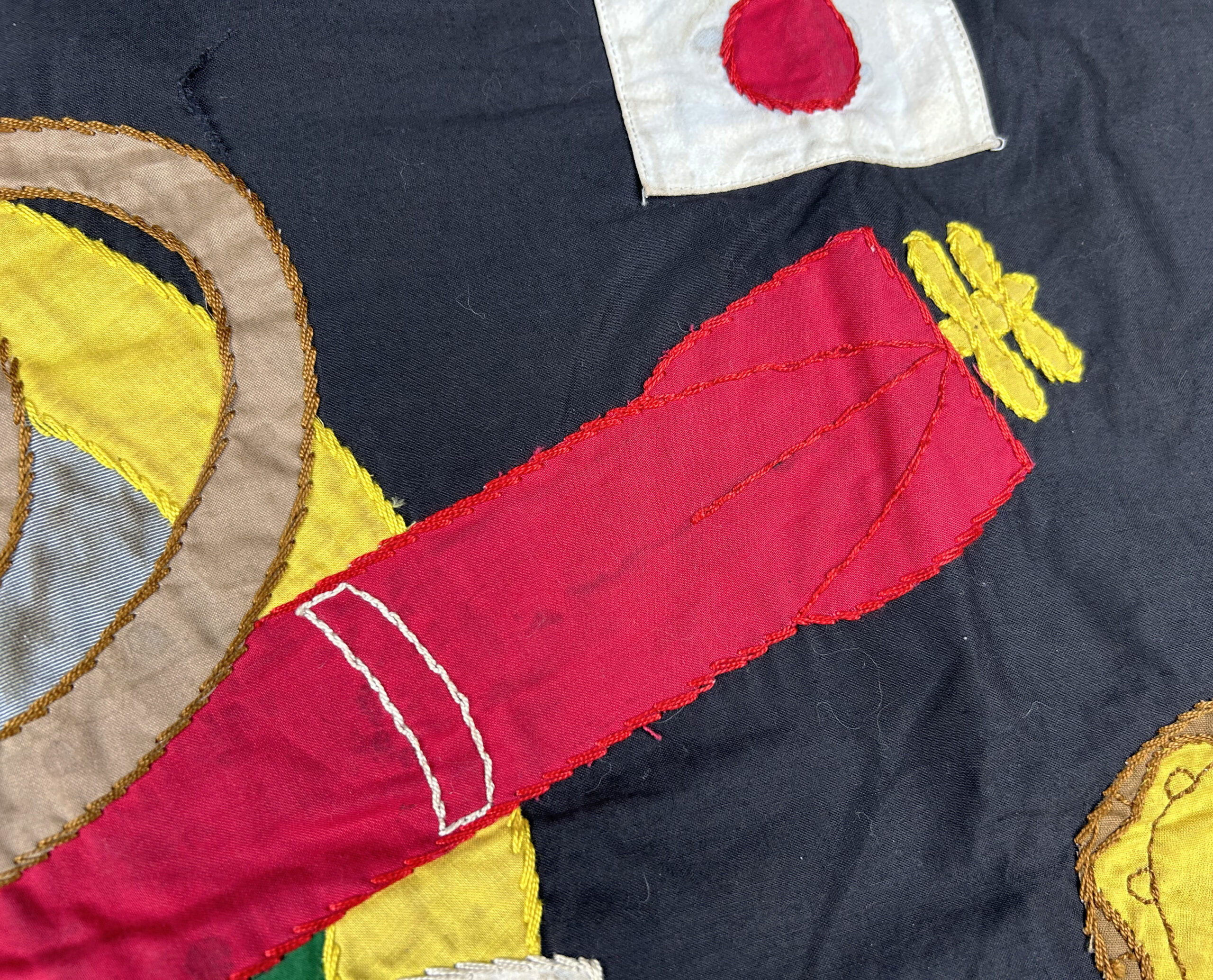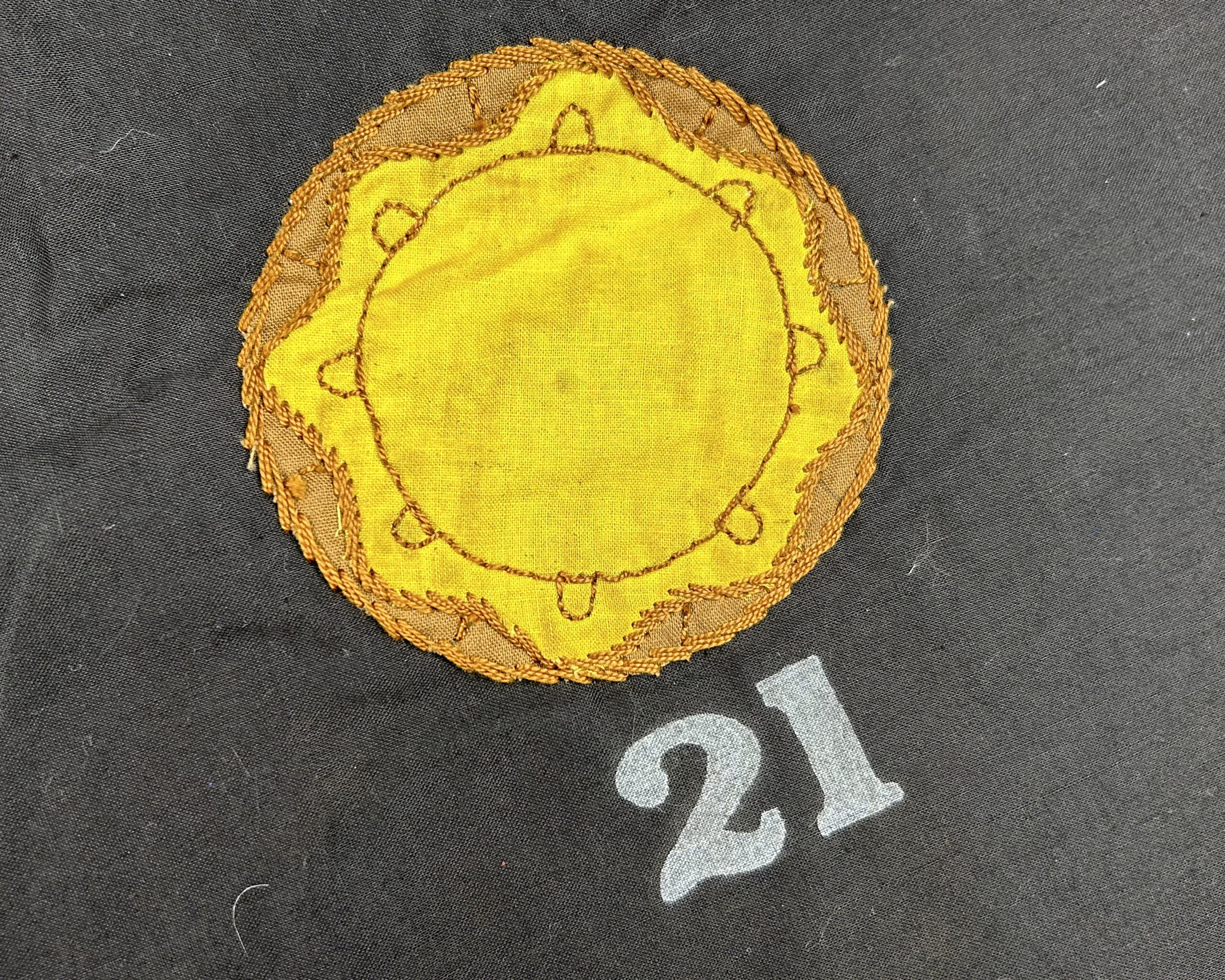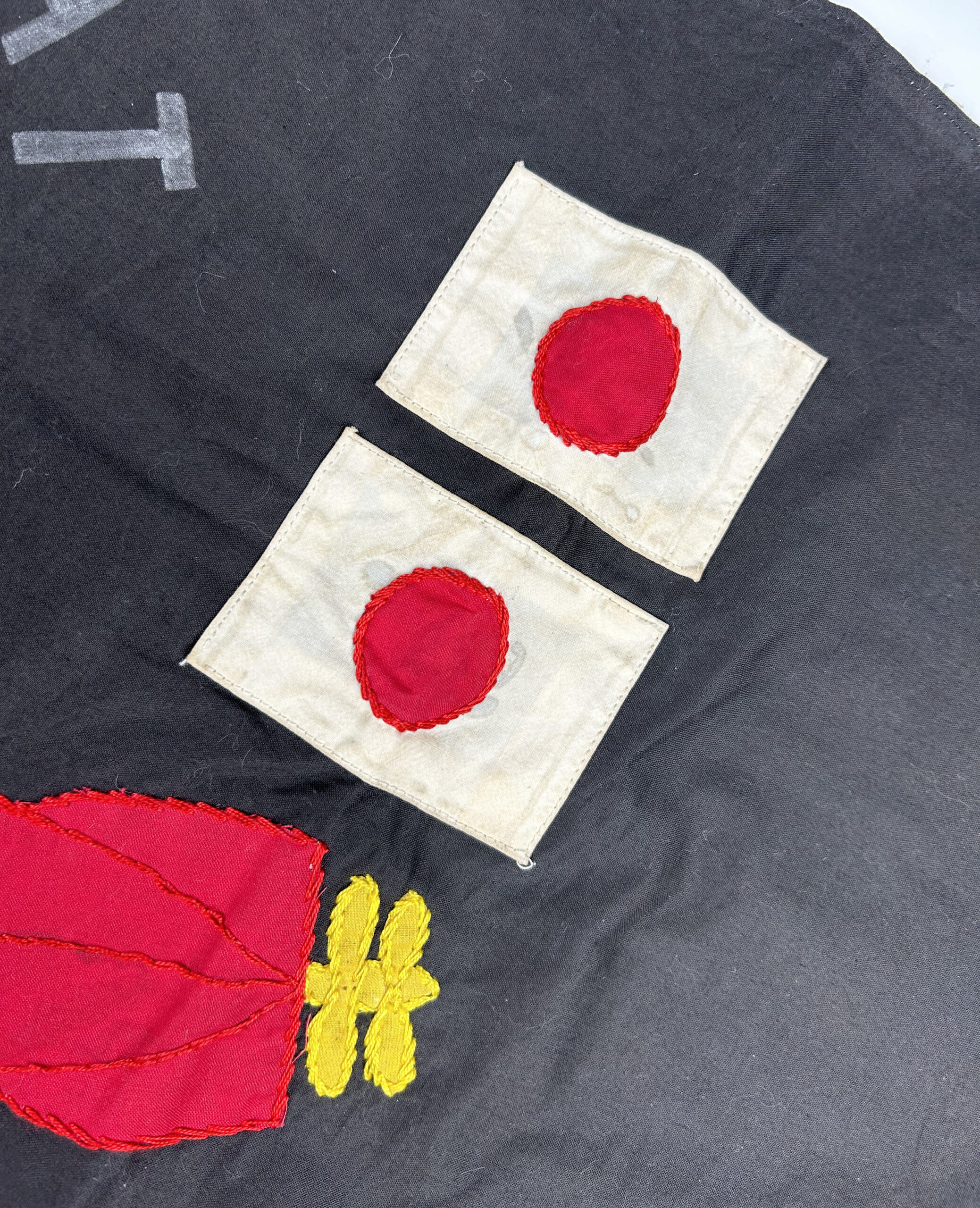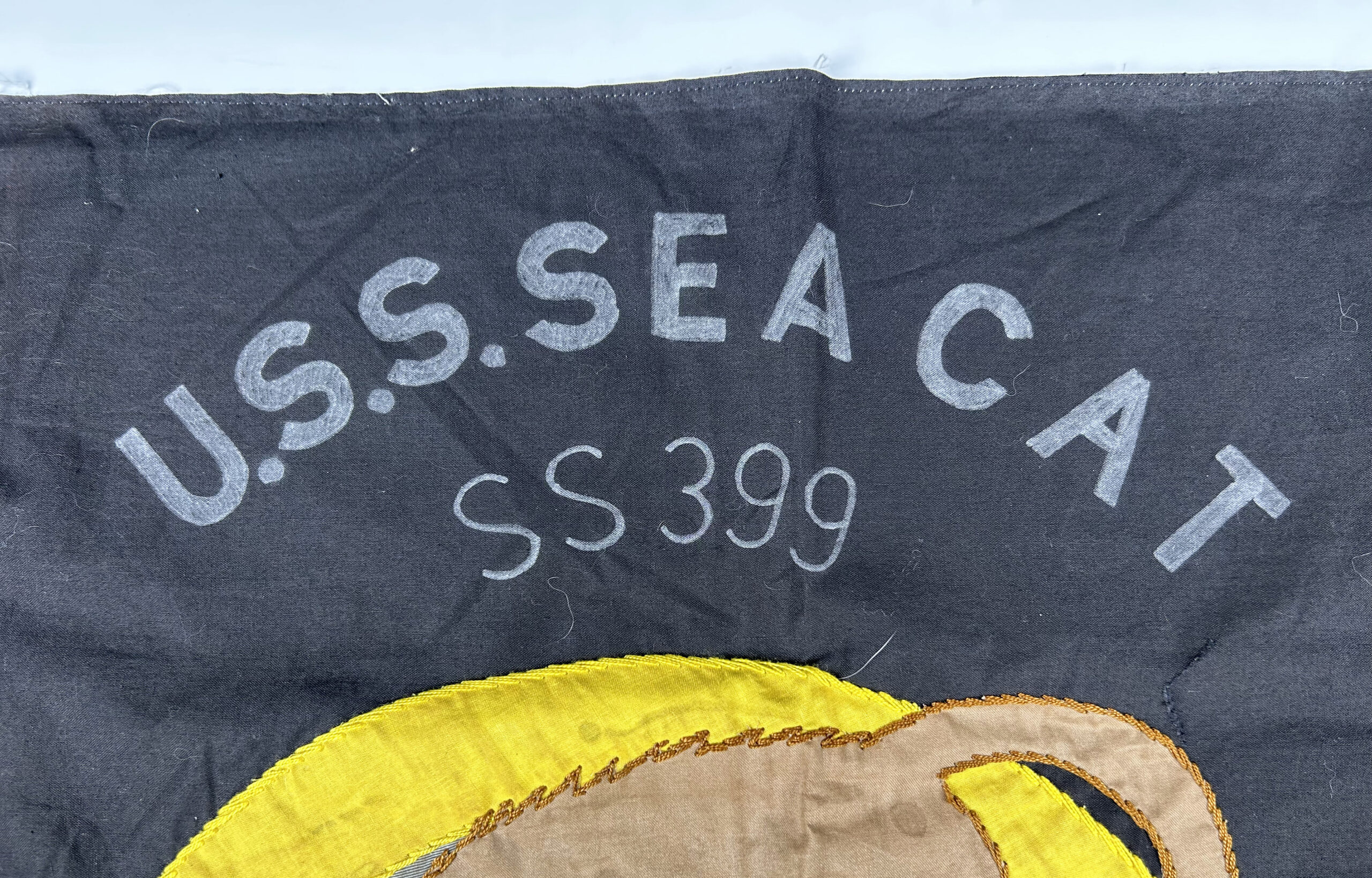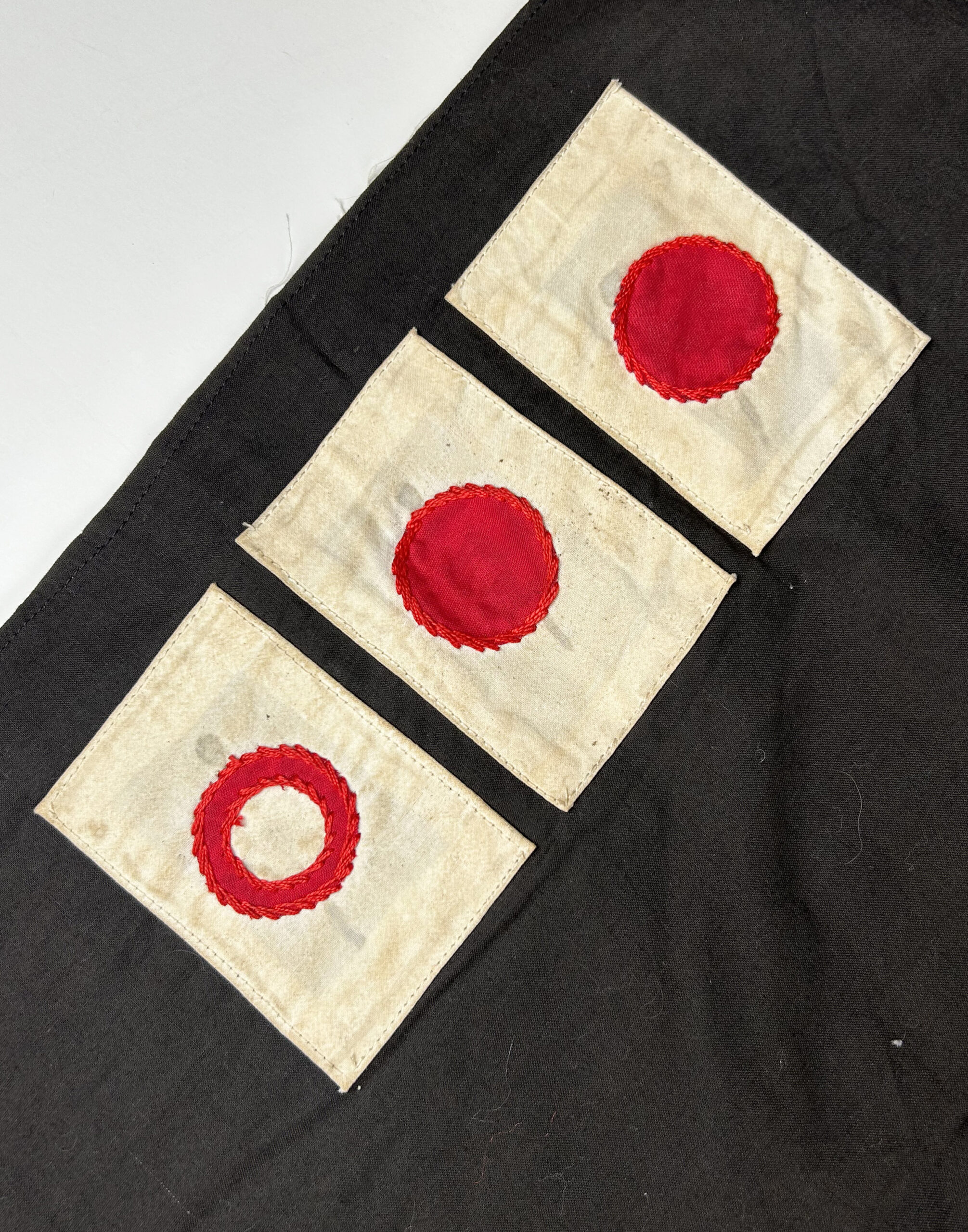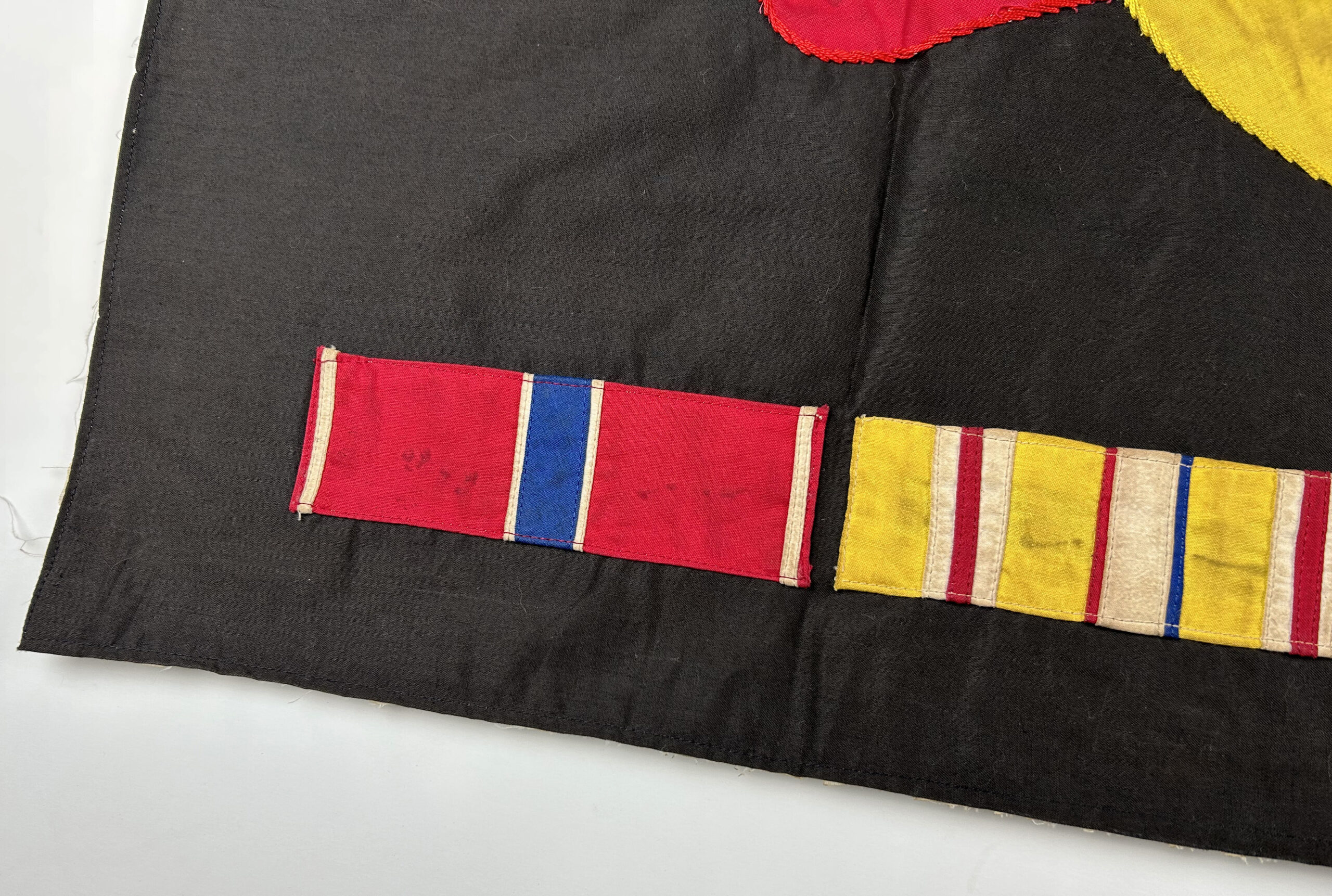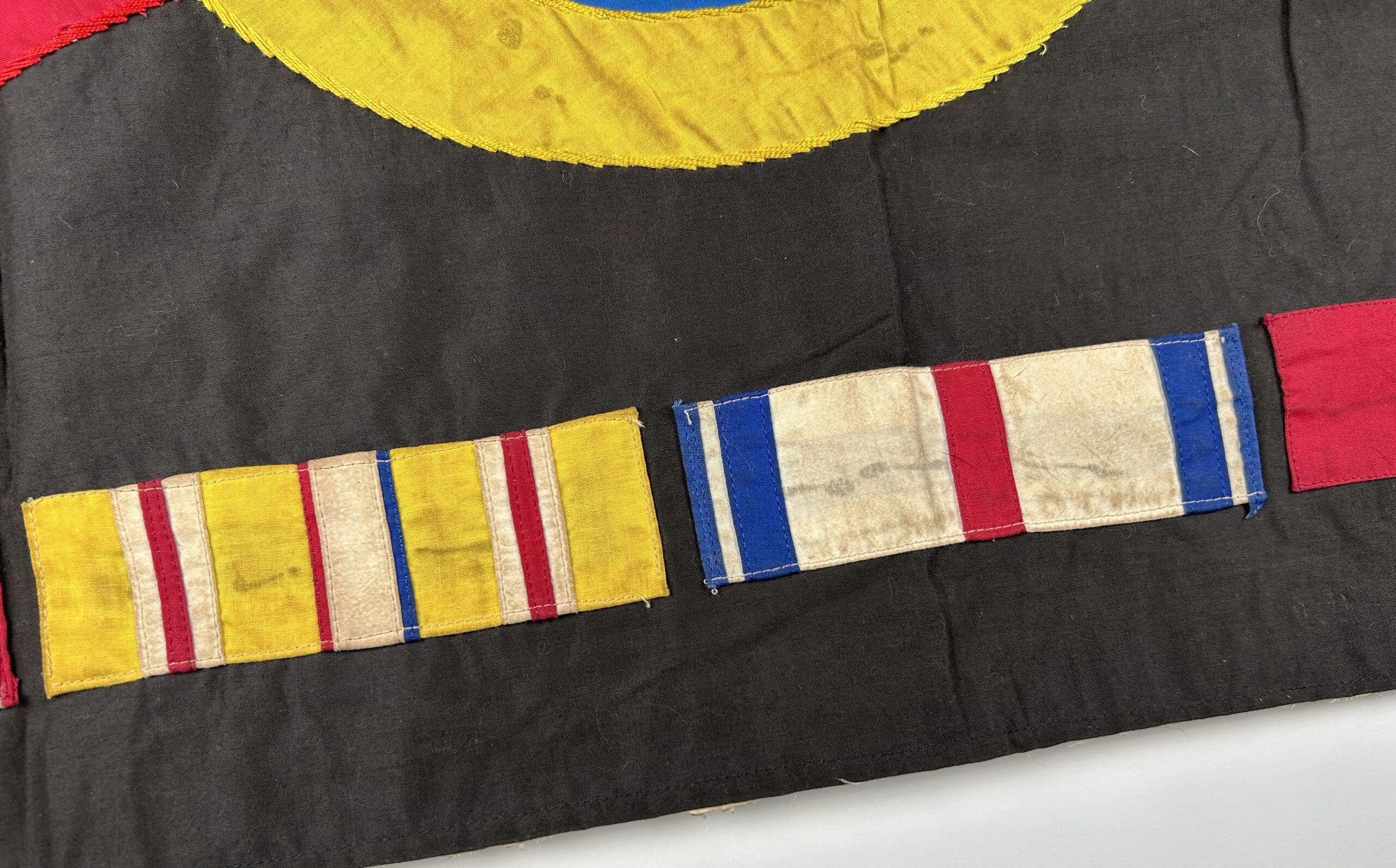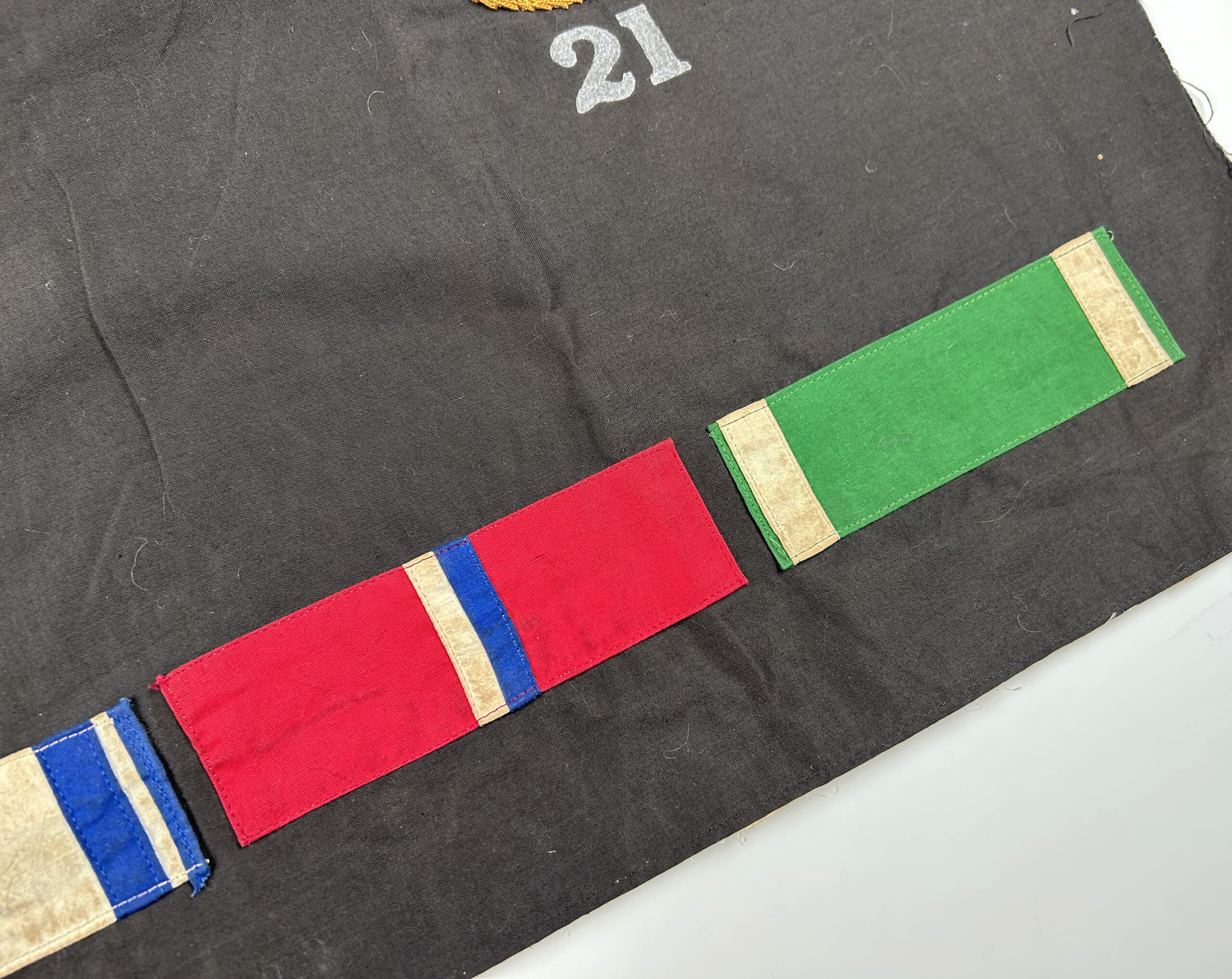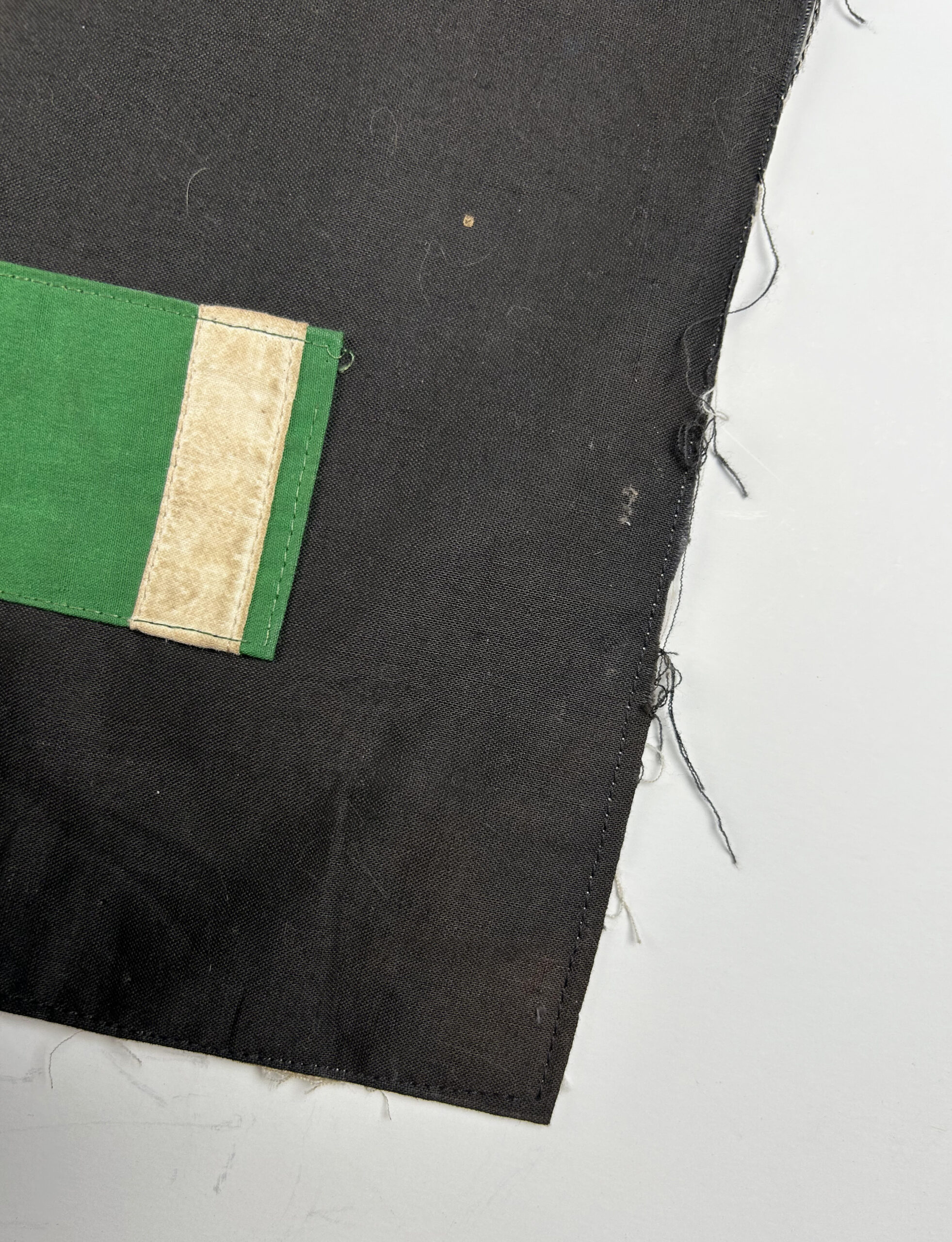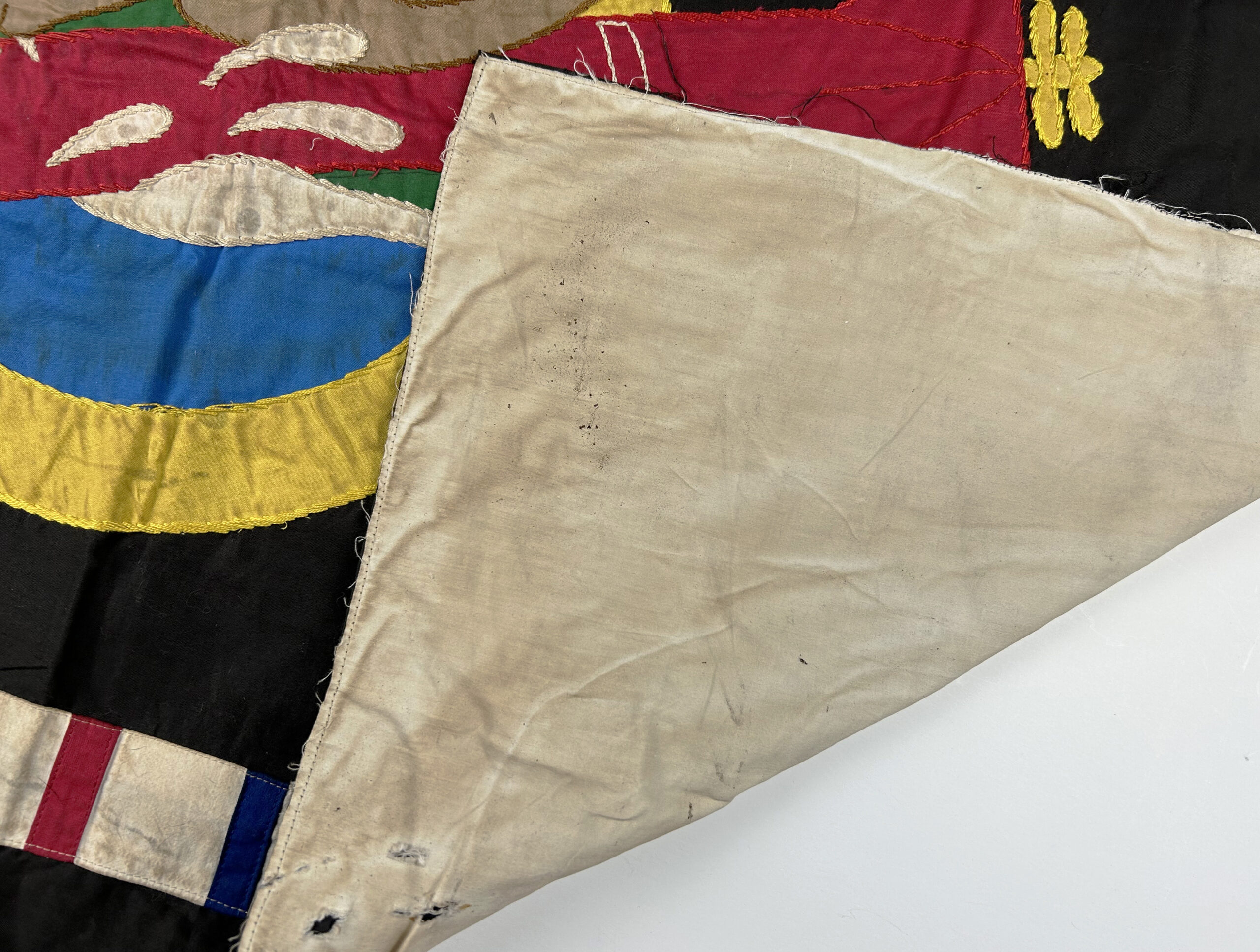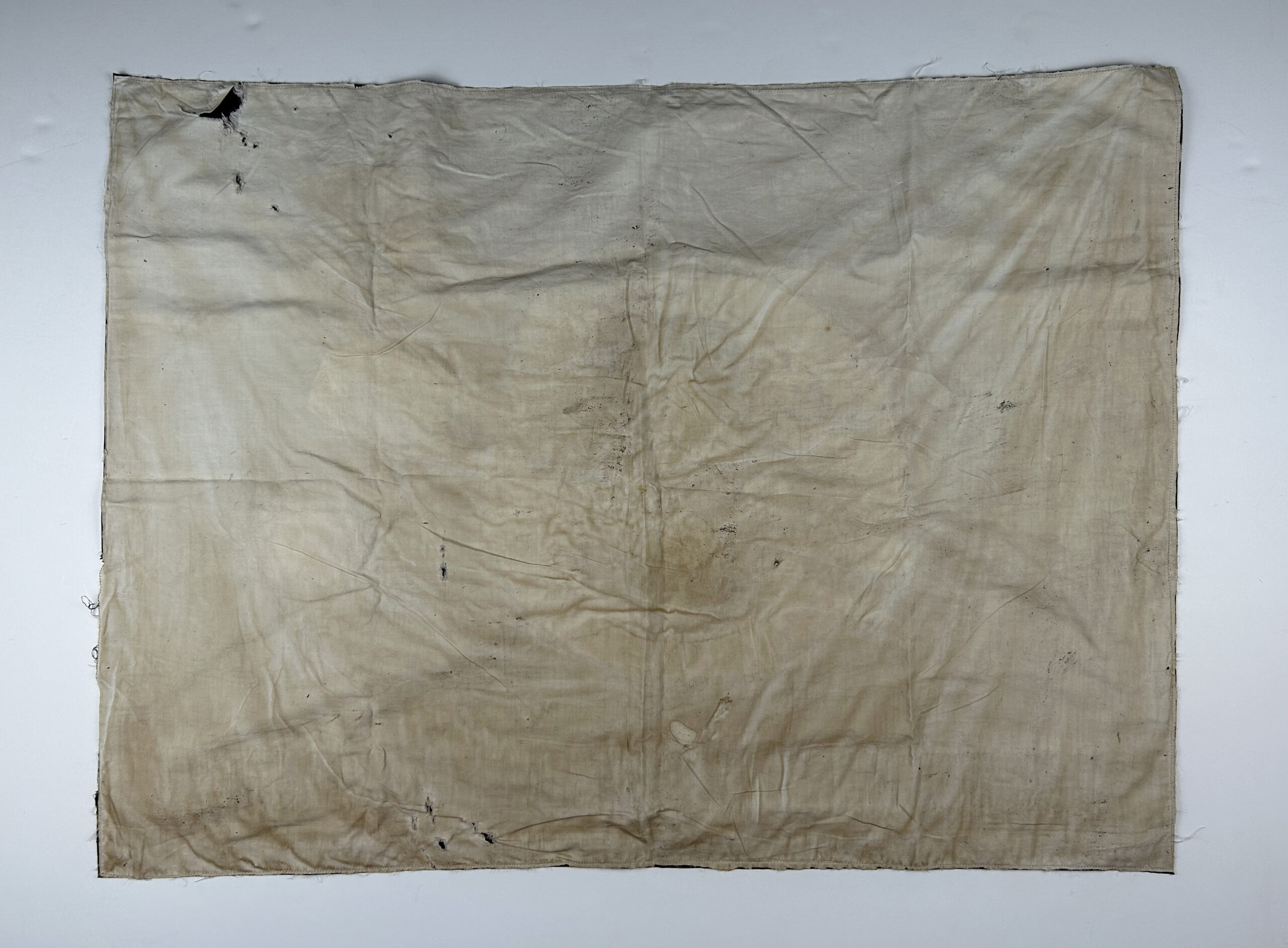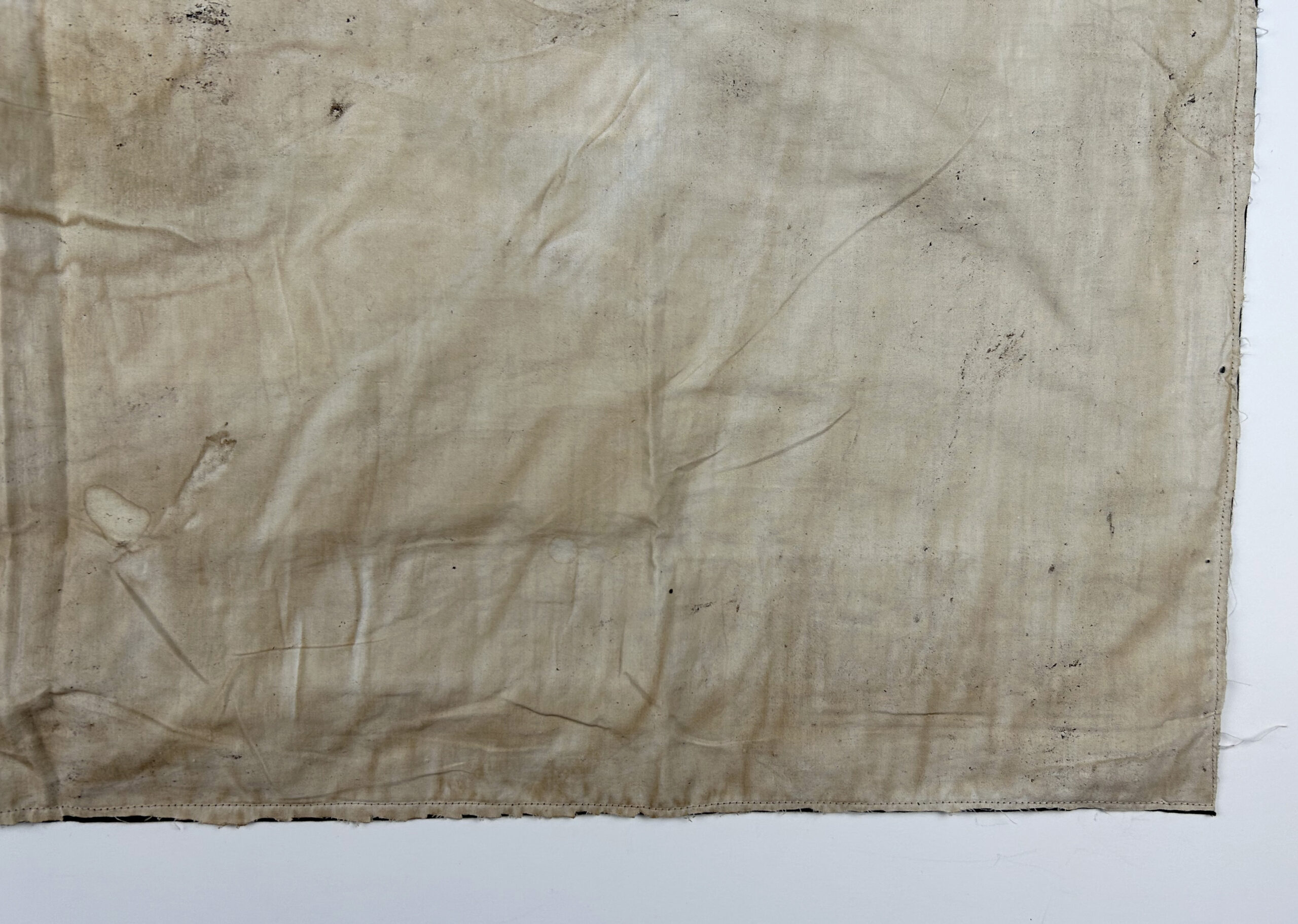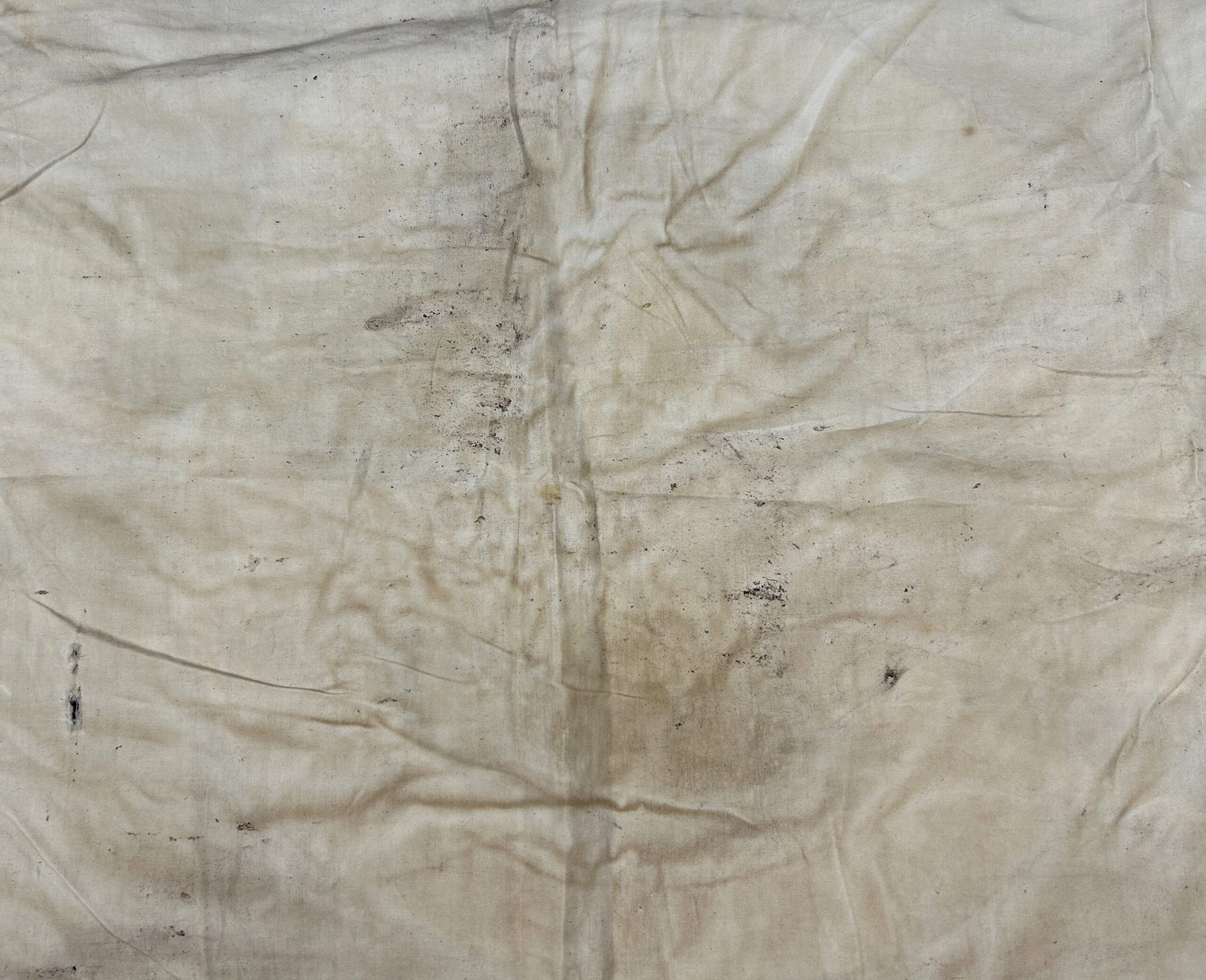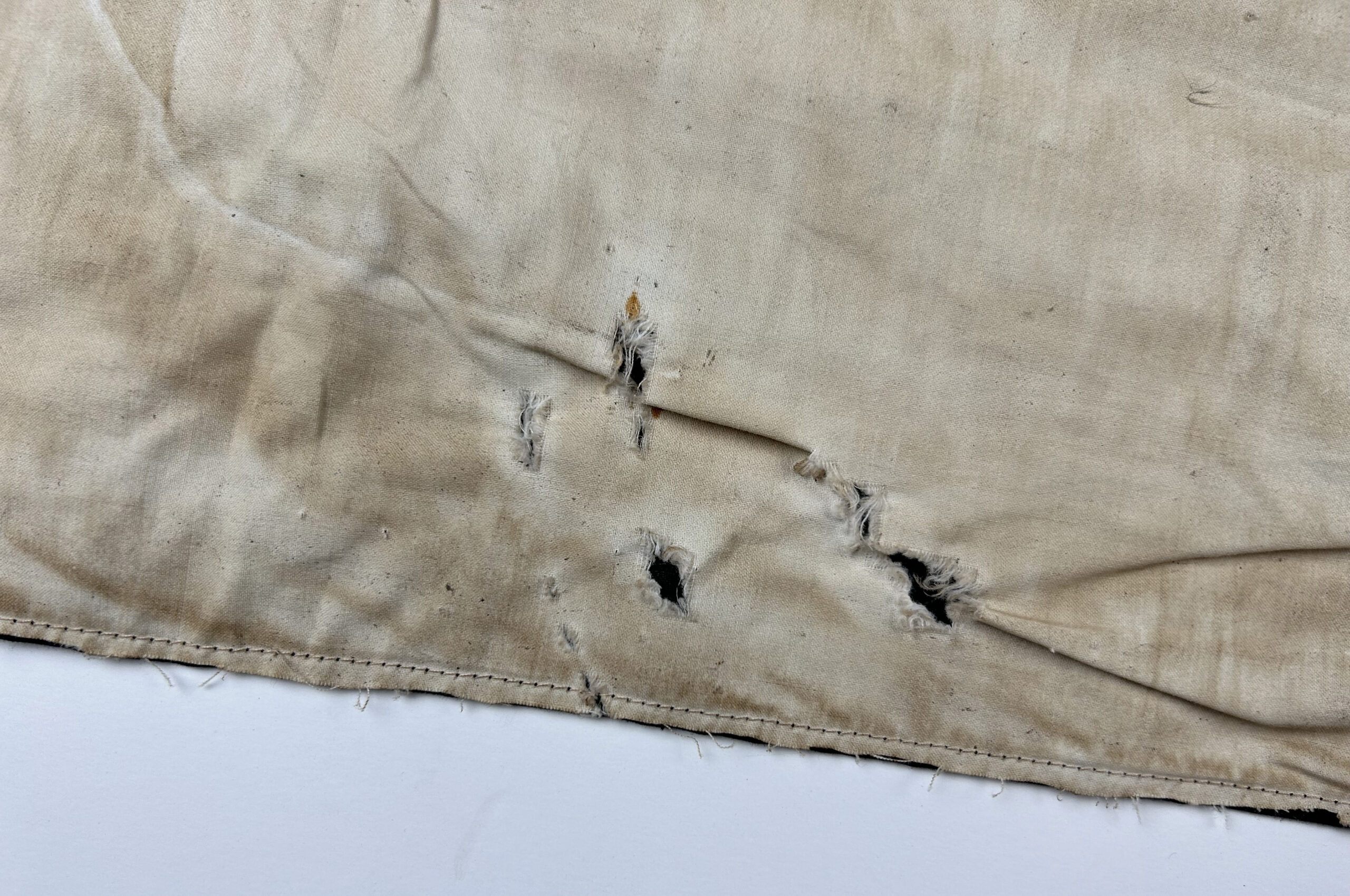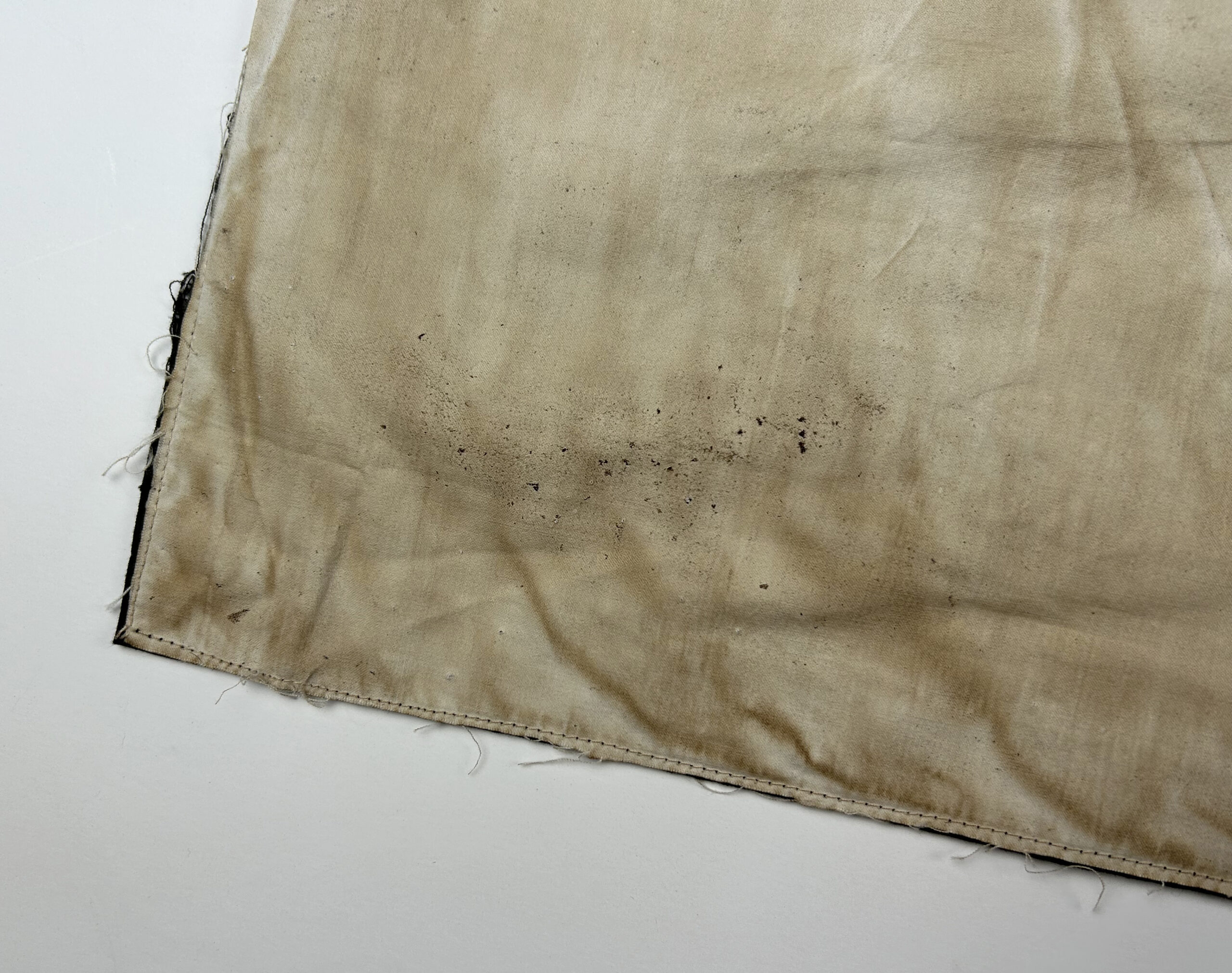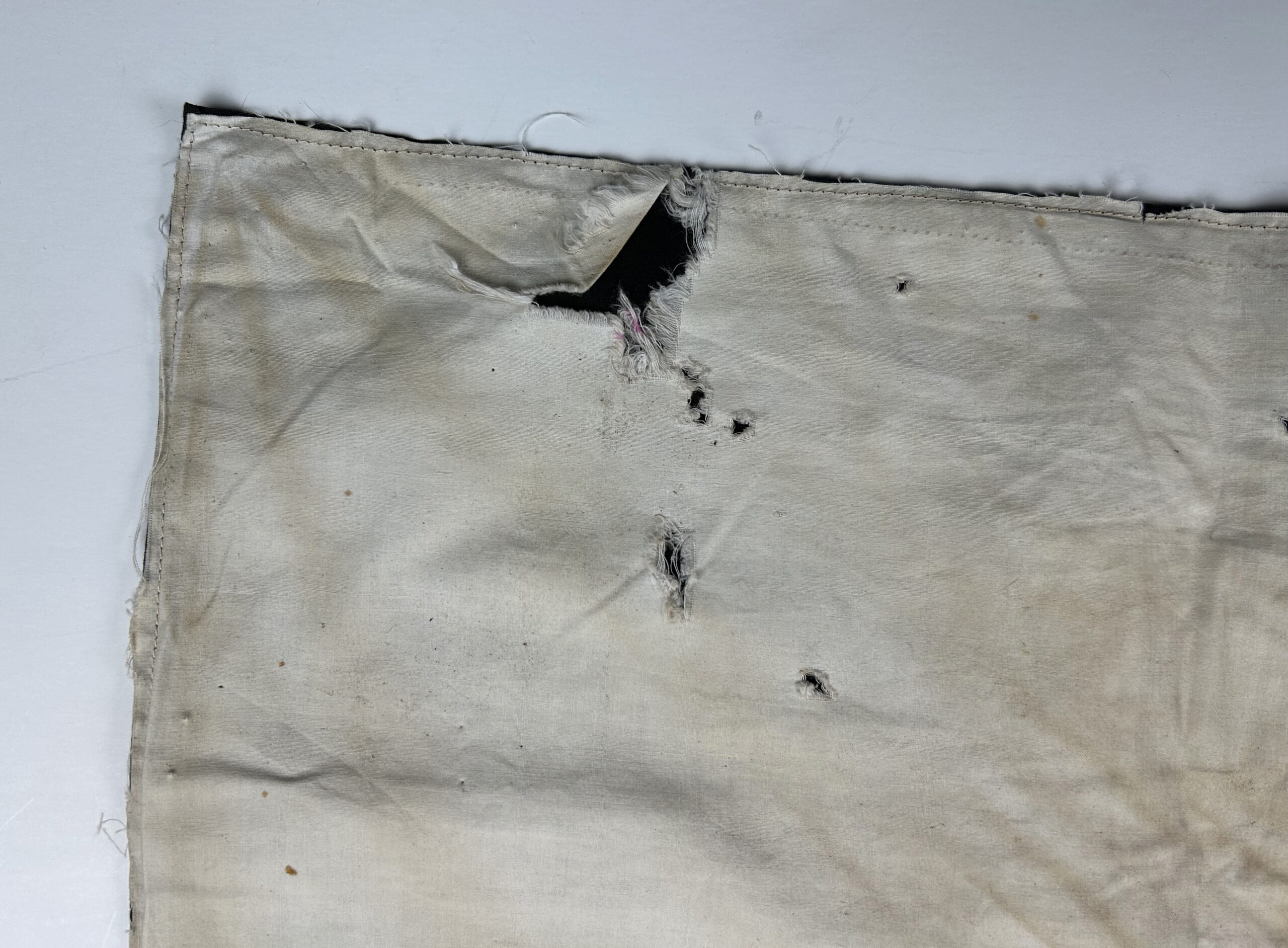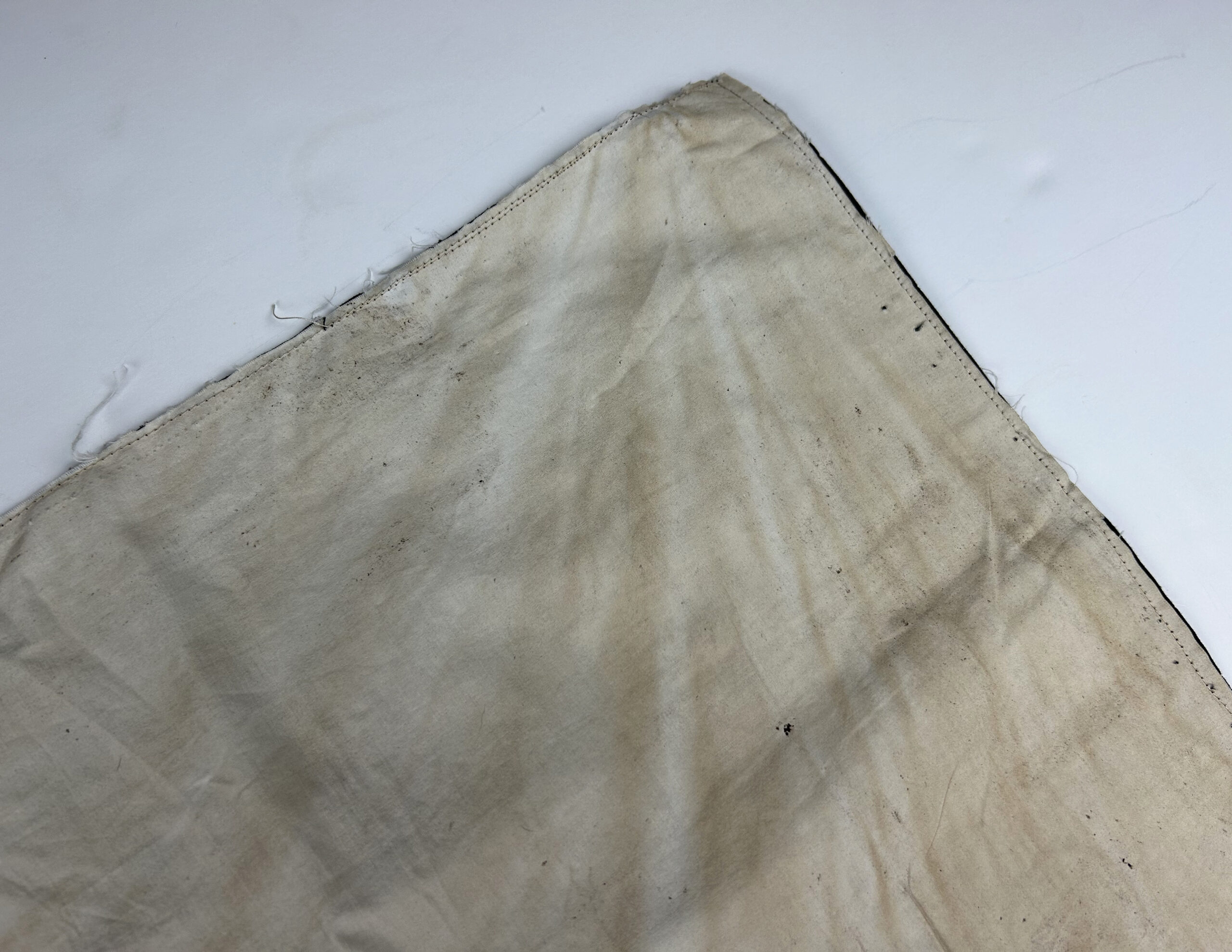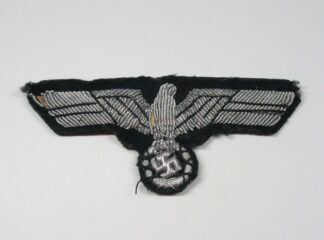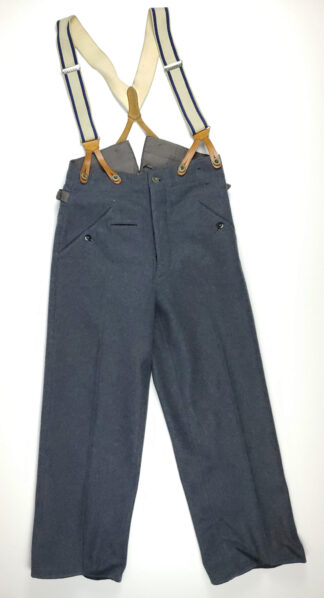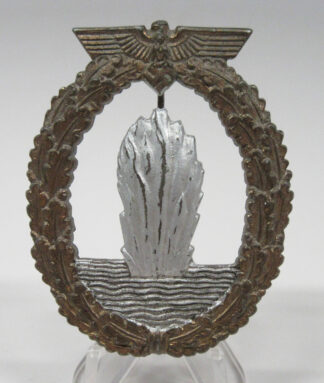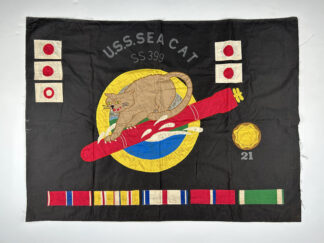Description
This kill flag was for the submarine SS-399 (U.S.S. Sea Cat.) The Sea Cat was laid down on October 30th 1943 by the Portsmouth Navy Yard in Kittery, Maine; launched on 21 February 1944, sponsored by Mrs. E. L. Cochrane; and commissioned on 16 May 1944, Commander Rob Roy McGregor in command. After shakedown and trials off the New England coast, the new submarine departed New London, Conn., on 28 August and proceeded via the Panama Canal to Hawaii. Following training in Hawaiian waters, Sea Cat departed Pearl Harbor on 28 October and headed, via Midway and Saipan, for the South China Sea where she operated in a wolf pack which also included Pampanito (SS-383), Pipefish (SS-388), and Searaven (SS-196).During the war patrol, Sea Cat fired torpedoes at two Japanese merchantmen which, together, displaced about 15,000 tons. Her commanding officer thought that they had both been sunk, but a postwar study of Japanese records did not confirm either sinking. After 61 days at sea, including 37 days in her patrol area, Sea Cat arrived at Guam for refit. The submarine got underway again on 1 February 1945 for her second war patrol which she conducted in the East China Sea in a wolf pack which included Segundo (SS-398) and Razorback (SS-394). During operations off the coast of Kyūshū, she damaged a 300-ton cargo ship by gunfire and attacked a 2,000-ton ship with torpedoes. Although she reported sinking the latter, Japanese records do not seem to support the claim. Sea Cat completed the patrol upon arriving at Midway on 24 March. On 27 April, the submarine sailed for the Yellow Sea where she and six other submarines preyed upon Japanese shipping. Sea Cat accounted for 400 tons of enemy vessels by gunfire, and she picked up two survivors of the sunken enemy ships for questioning before returning to Pearl Harbor on 25 June. She headed toward the Kuril Islands on 6 August for her fourth war patrol; but, upon arrival in her patrol area, learned that hostilities had ceased. She was ordered to proceed to the Japanese home islands and was in Tokyo Bay during the formal surrender ceremony on 2 September. Sea Cat earned three battle stars for her World War II service.
